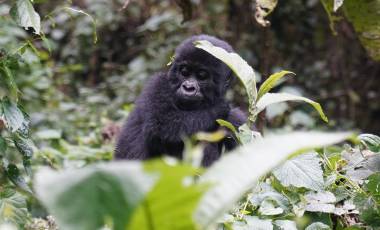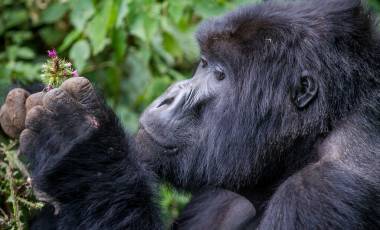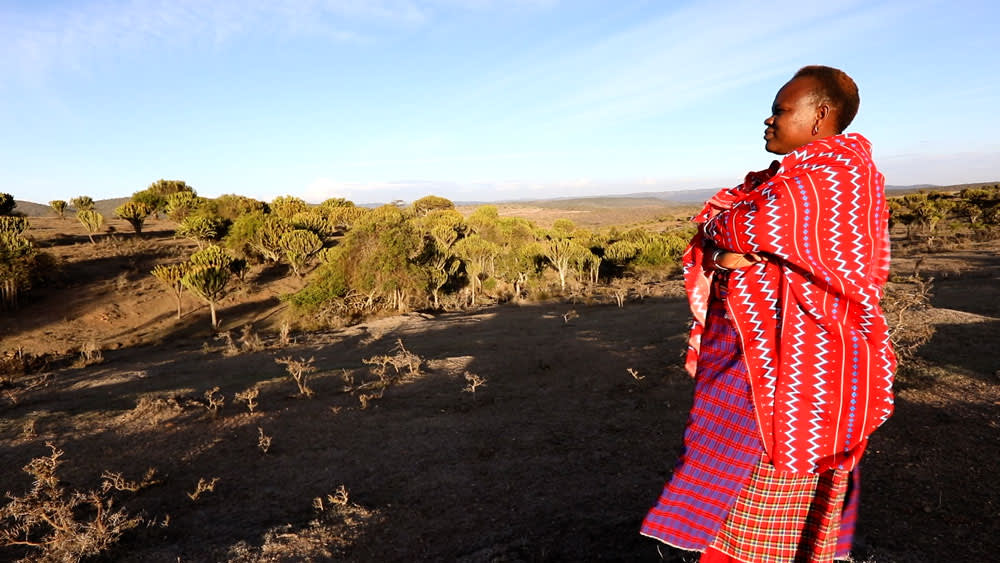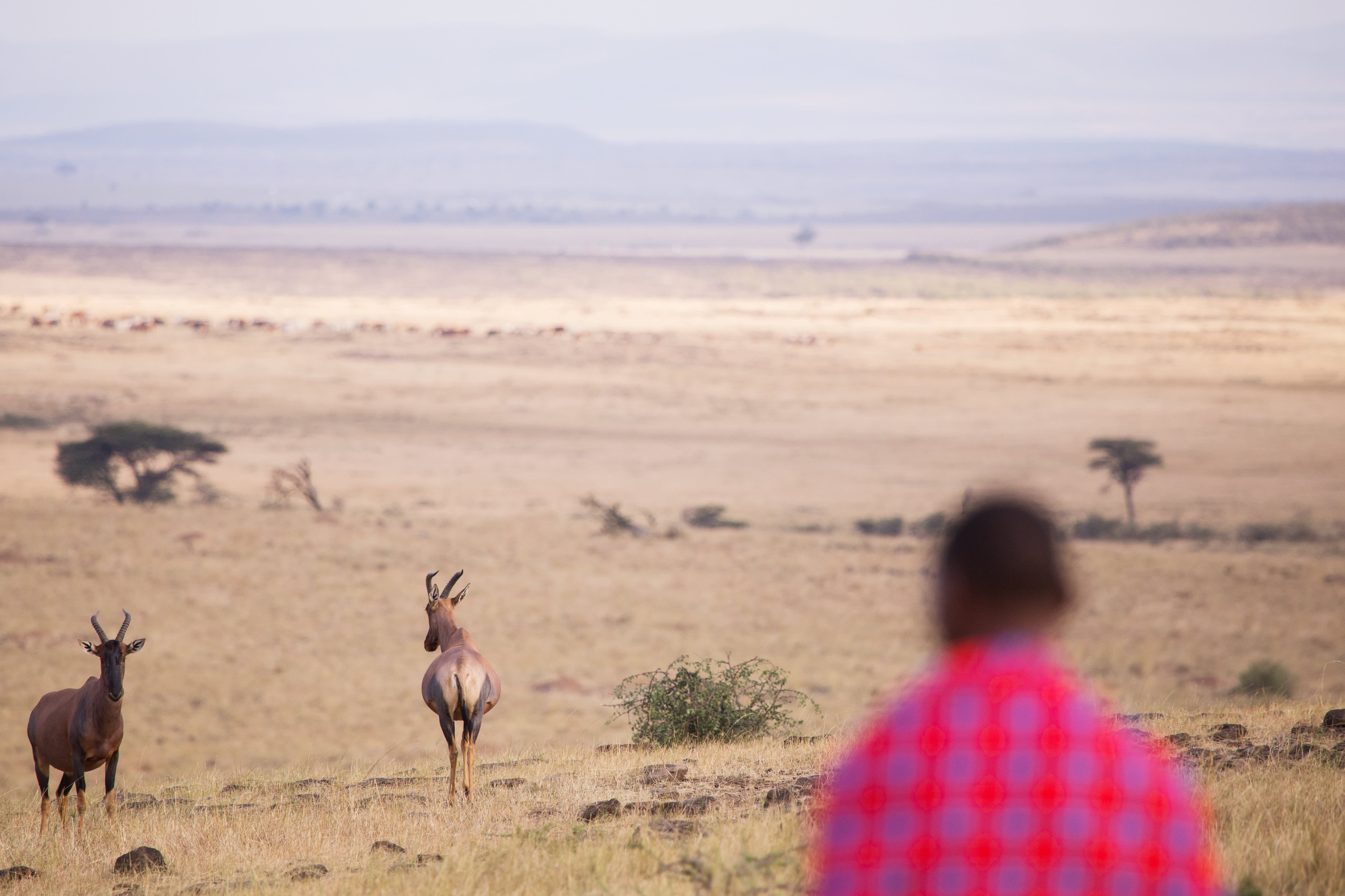Gorillas & Masai Mara - Camping

Gorillas & Masai Mara - Camping Reverse

Shape your adventure: With Extensions, every beginning and ending is yours to create. Learn More.

Wherever you go on the East African safari circuit of southern Kenya and northern Tanzania, the Maasai people are a near-constant presence.
You’ll see the brightly colored reds, blues and purples of their Shúka (sheets worn wrapped around the body, one over each shoulder, then a third over the top of them) standing out vividly against the landscape, whether in small mud-thatched villages, more modern towns or the vast open spaces on which they continue to graze their cattle, as they have for more than 500 years.

While it may be the region’s prodigious wildlife that draws most nature travel lovers to East Africa, it is the Maasai people who provide its distinctive cultural flavor. So it’s worth learning more about these semi-nomadic pastoralists before you visit, and visiting one of their traditional villages if at all possible while you’re there. For us, it proved to be one of the most memorable experiences of our East African safari.

A Brief History of the Maasai
The Maasai are a Nilotic people indigenous to the African Great Lakes region, with roots that can be traced back to South Sudan.
According to their oral history, they began migrating south from the lower Nile Valley north of Kenya’s Lake Turkana sometime in the 15th century, ultimately arriving in their current range between the 17th and late 18th century.
Many of the ethnic groups that had established settlements in the area were either displaced or assimilated by the Maasai, who also adopted certain customs from them (including ritual circumcision and social organization focused more on age set than descent).
By the mid-19th century Maasai territory included the entire Great Rift Valley as well as the lands that surrounded it, and its people had become as well known for their strength as warriors (using spears, shields and clubs that could be thrown accurately from up to 70 paces) as they were for their cattle-herding.

Understanding Maasai Culture
The Maasai people have a patriarchal social structure, with elder men making most of the decisions for each group and the number of cattle and children a man has determining his wealth. Men often have several wives, each with her own house, but the women must build their own houses (fashioned from sticks, cow dung and thatched roofs) every five years due to termites.
Boys are expected to shepherd the family’s cattle (which provides their three main food sources: meat, milk and blood), while girls help their mothers gather firewood, cook and handle most other domestic responsibilities. Both sexes have historically undergone a ritual circumcision known as emorata, although the practice is gradually waning due to criticism from Maasai activists and foreigners alike.
Adolescent boys who undergo the procedure (which is performed without anaesthetic using a sharp knife) are expected to do so in silence, as crying out in pain brings dishonor. Afterwards they are known as Moran, and sent to live in a manyatta (or village) built by their mothers for many months, during which they make the transition to becoming warriors. You’ll likely see many Moran alongside the roads in Kenya and Tanzania in their distinctive black clothes and white facial markings, offering to pose for tourist photos for money.
The Maasai culture is renowned for its music and dance, in which a leader (known as the olaranyani) sings the melody while others sing polyphonic harmony on call-and-response vocals and make guttural throat-singing sounds to provide rhythmic syncopation. The warriors’ coming of age ceremony, known as eunoto, can involve 10+ days of singing, dancing and ritual, including the competitive jumping for which the Maasai are perhaps best known.

Threats to the Maasai Way of Life
Problems between the Maasai people and government authorities date back more than 100 years, to when a pair of treaties with the British reduced Maasai land in Kenya by 60% to make room for ranches for colonial settlers. In Tanzania in the 1940s, the pastoralists were displaced from the fertile lands around Mount Meru, Mount Kilimanjaro and the Ngorongoro Crater.
Much of the land taken from the Maasai was used to create many of the world’s most famous wildlife reserves and national parks, including Kenya’s Amboseli, Masai Mara, Samburu and Tsavo and Tanzania’s Lake Manyara, Ngorongoro, Tarangire and Serengeti.
More recently, the Maasai have resisted the urgings of the Kenyan and Tanzanian governments to adopt a more sedentary lifestyle and send their children to government-approved educational facilities. According to our guide, this is because the Maasai believe that most people go to school to learn how to become rich, and they believe that they are already wealthy due to the richness of their culture and lifestyle.
Non-profit organizations such as Survival International are currently working with tribal leaders to help the Maasai regain grazing rights to their historic lands and resist government efforts to force them to adapt to modern notions of “progress.” With more than 1 million Maasai estimated to live in these popular ecotourism hotspots, here’s hoping their rich, distinctive culture and lifestyle continues to thrive for many centuries to come.

Travel to East Africa
Join Exodus on an African safari, discovering the region’s fascinating wildlife and culture! Exodus offers small-group Kenya & Tanzania safaris, as well as custom safari travel crafted to match your interests.

